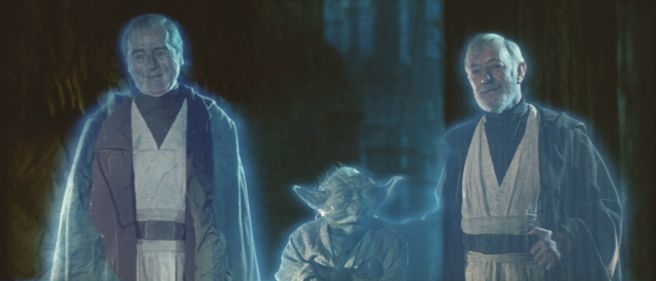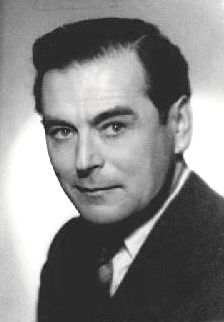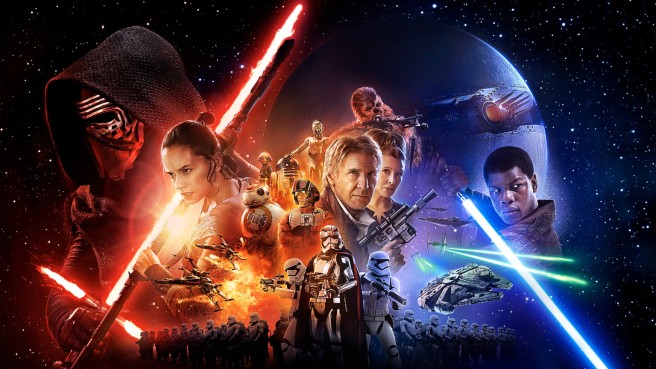For me, the 1997 special editions of the Star Wars films are the originals. A babysitter called Russell showed me the original originals first, but it was a box set of the re-touched trilogy that I spotted in Sainsbury’s. I loved them, and only discovered years later they were largely reviled. The changes George Lucas had made then never bothered me enormously, even after I’d learned about them. They’re what I grew up with, after all, and I still look back on those versions fondly. But for the 2004 DVD release, further changes came, including one that I’d have considered odious even if these had been ‘my’ versions. For the sake of continuity, several supporting actors from the original films were completely replaced, notably Sebastian Shaw.
Special effects alone don’t make a sci-fi masterpiece, as years of vintage Doctor Who has taught me; excellent drama does. What a great film needs at its heart is an engaging story, brought to life by an exemplary cast. Working to enhance already ground-breaking special effects understandably irritates some, but chopping and changing individual actors, with such casual disregard for their whole contribution, strikes me as full-on vandalism. Jason Wingreen as Boba Fett and Clive Revill’s vocal turn as the Emperor (Elaine Baker on-screen) are small parts, but they’re sinister, compelling performances that are part of the character of The Empire Strikes Back (1980). Replacing them with Temuera Morrison and Ian McDiarmid might be more consistent with what followed, but don’t mistake that for better serving the individual film.
Shaw’s fleeting appearances in the closing ten minutes of Return of the Jedi (1983) make that film for me. The revelation of Darth Vader as the frail human he always was is spellbinding. He looks up at his son with a kindly smile, father and son finally united, before the last of his strength leaves him. It’s the nearest to tear-jerking the Star Wars films get, and its emotional weight is thanks in part to Mark Hamill, but especially to Shaw. He returns at the very end as a spirit, rejuvenated, looking on his children with what seems to me a look of pride, tempered by yearning and loss. In his scenes, Shaw says little (nothing at all in his closing scene). His expressions show all we need. It’s a highly affecting performance that brings the whole trilogy to a fitting end.

Aside from anything else, the boorish insertion of Hayden Christensen into the final scene in 2004 shows an utter lack of consideration for Shaw’s contribution as an actor to the overall story. Shaw was presumably directed to look slightly to his right as part of the shot-reverse-shot Richard Marquand uses, and his expression is perfectly appropriate to the scene as well. The footage used of Hayden Cristensen was not specially filmed, but clipped from elsewhere and stitched onto Shaw’s body. We’re therefore watching a scene performed by an actor who not only has literally no idea what he’s doing in it, but who has no idea he’s in it at all.
I feel sympathetic towards Christensen – as if he needed something to enamour him to Star Wars fans any less. For one thing, he had no idea his disembodied head was being bandied about in this way. Perhaps if he’d been asked to record the scene himself, a greater match could have been achieved, but that isn’t the main issue. As it is, the switch is incompetently done, but the very idea that it was considered acceptable at all is unbelievably disrespectful to Shaw, and to actors in general. They are the agents of storytelling at its most basic level, satisfying our human need to be told tales by other humans. If an actor is cast in a role, it is because they have something of themselves to offer the story, as Shaw clearly did. If they can then be cast aside so thoughtlessly, the very they bring to cinema is invalidated.
Something similar was done when a 1972 Doctor Who story was released on DVD (Oliver Gilbert and Peter Messaline’s Dalek voices have become unpopular down the years – again, I have fond memories of them). But that was at least offered as an extra, rather the main feature, and the original has not become increasingly hard to find. The flavour brought to it by those actors stays intact, while detractors can enjoy the new version (with the historic appeal I see in the original soundly removed). This seems to me a phenomenon exclusive to sci-fi: a need for consistency that sacrifices the charm of individual human contribution for some perceived technical superiority. I can’t imagine actors being replaced in ‘revisions’ of a work in any other genre (correct me if I’m wrong). It would rightly be seen as an insult to their work, and to their legacy.
Anyone contributing to the making of a film is there to serve the finished piece, but after a point, the relationship shifts, and the piece comes to serve them. In their acting, their music, their craftsmanship, an individual legacy is forged. That isn’t to say these artists are defined by a small role they had in a Star Wars film. For each of the actors I’ve mentioned, it was one job, and they’ve had long, varied careers. Between them, they enjoyed distinguished turns at the RSC, a make-up credit for An American Werewolf in London (1981), an appearance in Airplane! (1980), a Tony award-nominated performance as Fagin, and writing a sitcom that almost, but didn’t quite, stop Coronation Street from getting commissioned. Their Star Wars contributions are not the be-all and end-all, but they’re important nonetheless, Shaw’s in particular. In their own ways, they helped to make those films what they are.


